Advertisements
Advertisements
प्रश्न
The circuit in figure shows two cells connected in opposition to each other. Cell E1 is of emf 6V and internal resistance 2Ω; the cell E2 is of emf 4V and internal resistance 8Ω. Find the potential difference between the points A and B.
उत्तर
In this problem, after finding the electric current flow in the circuit by using Kirchoff’s law or Ohm’s law, the potential difference across AB can be obtained.
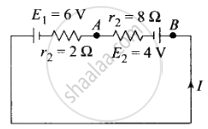
Applying Ohm's law.
Equivalent emf of two cells = 6 – 4 = 2V and equivalent resistance = 2Ω + 8Ω = 10Ω, so the electric current is given by
`I = (6 - 4)/(2 + 8)` = 0.2 A
Taking loop in anti-clockwise direction, since E1 > E2
The direction of flow of current is always from high potential to low potential.
Therefore VB > VA.
⇒ VB – 4V – (0.2) × = VA
Therefore, VB – VA = 3.6V
Important point: Sign convention for the application of Kirchoff’s law: For the application of Kirchoff’s laws following sign convention are to be considered.
(i) The change in potential in traversing a resistance in the direction of current is – iR while in the opposite direction + iR.

(ii) The change in potential in traversing as emf source from negative to positive terminal is +E while in the opposite direction – E irrespective of the direction of current in the circuit.

APPEARS IN
संबंधित प्रश्न
Kirchhoff's junction law is equivalent to .............................
(a) conservation of energy.
(b) conservation of charge
(c) conservation of electric potential
(d) conservation of electric flux
In the given circuit, assuming point A to be at zero potential, use Kirchhoff’s rules to determine the potential at point B.

Consider the circuit shown in the figure. Find (a) the current in the circuit (b) the potential drop across the 5 Ω resistor (c) the potential drop across the 10 Ω resistor (d) Answer the parts (a), (b) and (c) with reference to the figure.
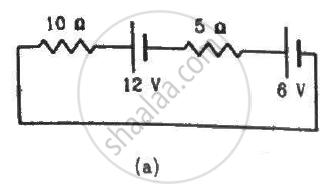
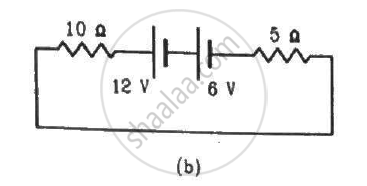
Consider the potentiometer circuit as arranged in the figure. The potentiometer wire is 600 cm long. (a) At what distance from the point A should the jockey touch the wire to get zero deflection in the galvanometer? (b) If the jockey touches the wire at a distance of 560 cm from A, what will be the current in the galvanometer?
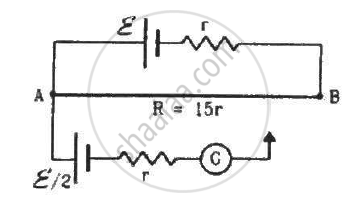
State Kirchhoff ’s voltage rule.
Lightning is a very good example of a natural current. In typical lightning, there is 109 J energy transfer across the potential difference of 5 × 107 V during a time interval of 0.2 s. Using this information, estimate the following quantities:
- the total amount of charge transferred between cloud and ground
- the current in the lightning bolt
- the power delivered in 0.2 s.

In a potentiometer arrangement, a cell of emf 1.25 V gives a balance point at 35 cm length of the wire. If the cell is replaced by another cell and the balance point shifts to 63 cm, what is the emf of the second cell?
Kirchhoff’s second law is a consequence of law of conservation of ______.
The figure below shows current in a part of electric circuit. The current I is ______.
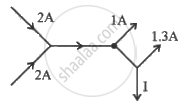
Why are alloys used for making standard resistance coils?
